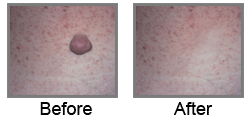Anal warts and treatment
The treatment aims to destroy the wart tissue in order to allow the recovery proccess to begin. Concerning the conservative treatment, there is a significant progress in immunotherapy with Interferon-Alpha ( a cytokine produced by the innate immune system in response to environmental exposures including viral infections) being available on the market. Interferon – Alpha is injected into the warts, causing an immune reaction that makes the warts disappear. The problem with this treatment is that Interferon-Alpha is quite expensive and in some cases it is ineffective.
Alternatively, in patients with external genital warts, Imiquimod cream is applied by the patient himself, and it stimulates the patient’s own immune system to release various chemical substances such as interferon.
Although genital warts can be treated, none of the available treatments cures HPV. The virus may remain in the surrounding skin after treatment. And because the virus may remain inactive in the cells, in some cases warts may reappear months or years after treatment. In other cases, on the other hand, the warts never reappear.
For effective treatment of warts, the most reliable treatment is to destroy the warts. This can be done, either chemically using an acid component, liquid nitrogen, or by surgery. Cryotherapy (cryosurgery), for example, is a minimally invasive treatment that destroys genital warts by freezing them with liquid nitrogen.
Warts can also be destroyed by Electrocautery or CO2 Laser Vaporization. These procedures are done in the hospital or in a surgical facility, without the patient needing hospitalization. During the operation, all visible warts are destroyed. However, it takes up to 30 days to make sure that the infected tissue shows no signs of wart growth. This is why it is very important to monitor the patient for a prolonged period of time to ensure treatment.
Anal warts are usually located on the perianal skin. Several times, however, they extend internally into the anus up to the dentate line or even into the mucosa of the rectum. Warts may also be found only intra-anal. In all cases of anal warts, rectoscopy is necessary to check the anal canal and to diagnose intra-anal warts and/or anal malformations.
Treatment in Intra-anal Warts is more difficult. They usually extend up to the dentate line, where they come into contact with the rectal mucosa, and the use of caustic chemicals or cryotherapy is not indicated (the cryotherapy method has been almost abandoned due to its complications, such as severe postoperative pain, high possibility of bleeding, long healing time, etc.).
In the case of intra-anal warts, the use of RF radiofrequency or modern LASER offers significant advantages. The cauterization or sublimation of warts in this area (dentate line height) must be carried out with absolute precision and the normal tissue around the warts must be preserved. The operation in this area must be carried out by a qualified doctor to avoid serious post-operative complications that are difficult to treat, such as severe narrowing of the anus, contamination and the formation of abscesses, fistulas, etc.
Read also: Warts and anal cancer

